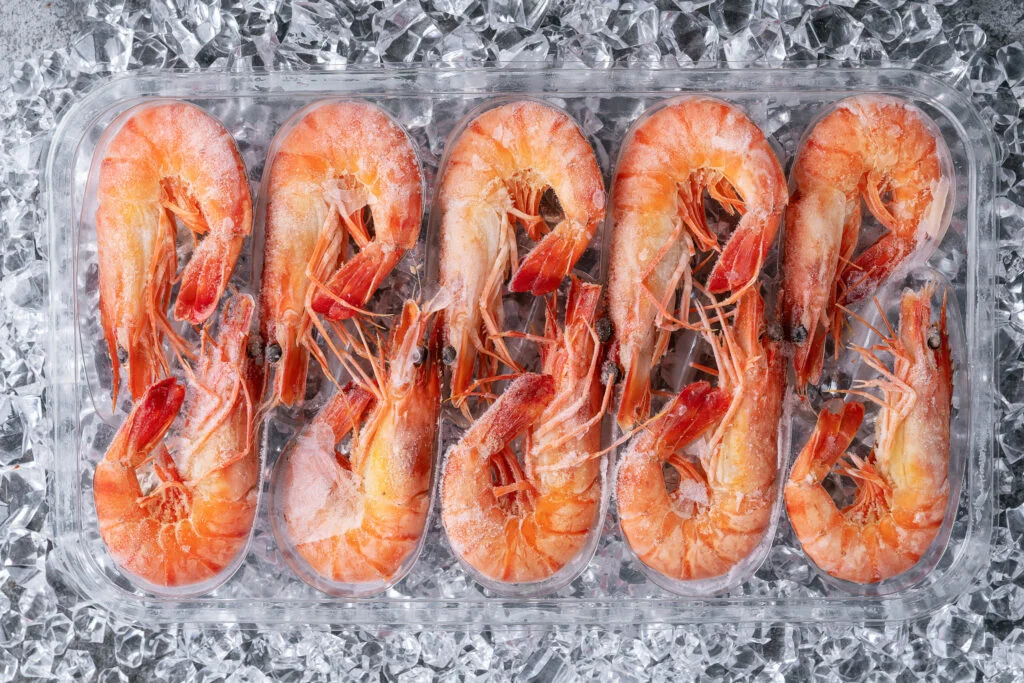
Seafood is one of the most delicate and perishable food products, requiring stringent handling and packaging to maintain freshness, prevent contamination, and ensure safety during transportation. The seafood industry relies heavily on high-quality packaging materials that help preserve product integrity from the point of processing to the final destination. In this article, we will explore various types of seafood packaging, optimal storage conditions, the advantages of using proper packaging materials, and the risks associated with improper packaging.
1. The Critical Role of Proper Seafood Packaging
Seafood is highly vulnerable to microbial growth, oxidation, and physical damage, making packaging an essential factor in its supply chain. Effective packaging plays a crucial role in:
- Extending shelf life
- Preventing bacterial and microbial contamination
- Preserving nutritional value and texture
- Reducing food wastage
- Enhancing visual appeal and marketability
The selection of the right packaging material and technique is vital to comply with regulatory standards and meet customer expectations.
2. Common Packaging Materials Used in the Seafood Industry
Different seafood types and transportation requirements necessitate specific packaging materials to ensure optimal freshness and quality.
A. Styrofoam (Expanded Polystyrene – EPS) Boxes
Best Used For: Frozen seafood, fresh fish, shrimp, crabs, and lobsters
Advantages:
- Superior insulation, preserving the cold chain
- Lightweight and cost-effective for shipping
- Moisture-resistant and protective against contaminants
Disadvantages:
- Non-biodegradable, posing environmental concerns
- Prone to breakage under heavy impact
B. Vacuum-Sealed Plastic Packaging
Best Used For: Smoked fish, marinated seafood, fillets, and fresh portions
Advantages:
- Oxygen removal inhibits bacterial growth and oxidation
- Extends shelf life and prevents freezer burn
- Transparent design enables product visibility
Disadvantages:
- Requires specialized vacuum-sealing equipment
- Not ideal for live seafood
C. Modified Atmosphere Packaging (MAP)
Best Used For: Processed seafood like smoked salmon, sushi-grade fish, and prawns
Advantages:
- Utilizes a gas mixture (CO2, N2, O2) to slow spoilage
- Maintains natural texture, color, and freshness
- Reduces the need for chemical preservatives
Disadvantages:
- Requires controlled storage and specialized equipment
- Higher cost compared to conventional packaging
D. Corrugated Fiberboard Boxes with Liners
Best Used For: Large seafood shipments, export packaging, and frozen seafood
Advantages:
- Durable and able to withstand rough handling
- Customizable for branding and labeling
- Can be combined with plastic or aluminum liners for added insulation
Disadvantages:
- Weakens when exposed to excessive moisture unless treated
- Not suitable for direct seafood contact
E. Polyethylene (PE) and Polypropylene (PP) Bags
Best Used For: Fresh seafood, fillets, and processed fish products
Advantages:
- Flexible, cost-effective, and lightweight
- Compatible with vacuum-sealing and ice packs
- Water-resistant, reducing spoilage risks
Disadvantages:
- Not suitable for live seafood storage
- May lack sufficient insulation for extended transport
3. Optimal Packaging Conditions for Seafood
To ensure seafood remains fresh and safe for consumption, it must be packaged under controlled conditions that minimize spoilage, bacterial proliferation, and loss of texture. Key factors include:
A. Temperature Control
- Fresh seafood should be stored at 0°C to 4°C (32°F to 39°F)
- Frozen seafood should be kept at -18°C (0°F) or lower
- Live seafood (e.g., crabs, oysters) requires aeration and damp conditions during transit
B. Humidity Control
- Excessive moisture fosters bacterial growth, necessitating moisture-resistant packaging
- Inadequate humidity can cause dehydration, affecting texture and quality
C. Oxygen Regulation
- Oxygen-reducing methods (vacuum packaging or MAP) slow spoilage and bacterial activity
- Some seafood, like shellfish, requires oxygen-permeable packaging to stay alive
D. Shock Absorption & Protection
- Strong, impact-resistant packaging prevents physical damage
- Secure sealing mitigates leakage and cross-contamination risks
4. Consequences of Improper Packaging
Failure to use suitable seafood packaging can lead to numerous complications, impacting business operations, product quality, and customer trust.
A. Accelerated Spoilage & Increased Waste
- Exposure to oxygen speeds up oxidation, leading to rancidity
- Poor insulation causes temperature fluctuations, fostering bacterial growth
B. Contamination & Health Hazards
- Inadequate sealing results in microbial contamination, increasing risks of foodborne illnesses like salmonella and listeria
- Inferior plastic materials may release harmful chemicals into seafood
C. Regulatory Non-Compliance
- Failure to meet international food safety and packaging standards can result in product recalls, import bans, and financial penalties
D. Customer Dissatisfaction & Brand Damage
- Poorly packaged seafood may appear unappetizing, reducing consumer confidence
- Leakage or unpleasant odor during transport can lead to product rejection
5. Choosing the Right Packaging for Your Seafood Business
To ensure product integrity and regulatory compliance, businesses must carefully evaluate their packaging options. Consider the following:
- Type of Seafood: Live, fresh, frozen, or processed
- Transit Duration: Long-distance shipments require enhanced insulation
- Regulatory Compliance: Align with international packaging and food safety guidelines
- Sustainability: Adopt eco-friendly alternatives to reduce environmental impact
- Cost-Effectiveness: Balance affordability with quality preservation
Conclusion
Proper seafood packaging is essential to maintaining freshness, ensuring safety, and adhering to food safety standards. The choice of packaging material depends on storage conditions, transportation requirements, and the type of seafood being handled. Neglecting appropriate packaging practices can result in contamination, spoilage, regulatory penalties, and consumer dissatisfaction.
By investing in high-quality packaging solutions, seafood businesses can enhance their supply chain efficiency, improve product longevity, and strengthen customer trust. Assess your current packaging strategies and upgrade them to meet industry best practices—your customers and your business will benefit significantly!
